Radio Waves
Radio Waves Revision
Radio Waves
Radio Waves are electromagnetic waves with wavelengths longer than \bold{10 \textbf{ cm}}. They are used to transmit signals to radios, televisions and Bluetooth communication devices.
Transmitting Radio Waves
Radio waves can be produced by oscillating charges. These oscillating charges produce oscillating electric and magnetic fields – this is what electromagnetic radiation is made of.
We can make oscillating charges using an alternating current (ac).
The frequency of the radio waves produced depends on the frequency of the alternating current.
The diagram below shows the process of transmitting and detecting radio waves. The ac supply causes electrons in the transmitter to oscillate. These electrons produce radio waves which are transmitted over as distance. At the receiver, the radio waves cause electrons to oscillate. The electrons produce an ac current in the receiver.
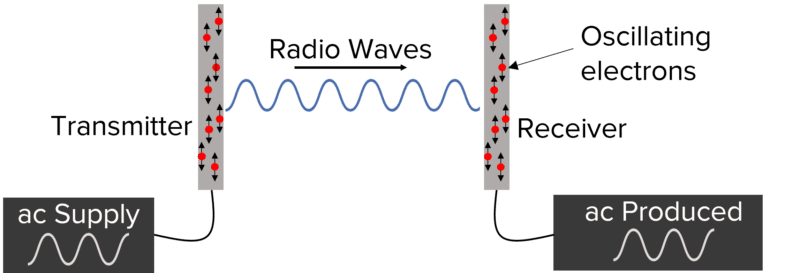
Uses of Radio Waves
In general, radio waves are electromagnetic waves with wavelength longer than 10 \text{ cm}, however they can also be split into different types of radio waves according to their wavelengths. Each type of radio wave has different uses.
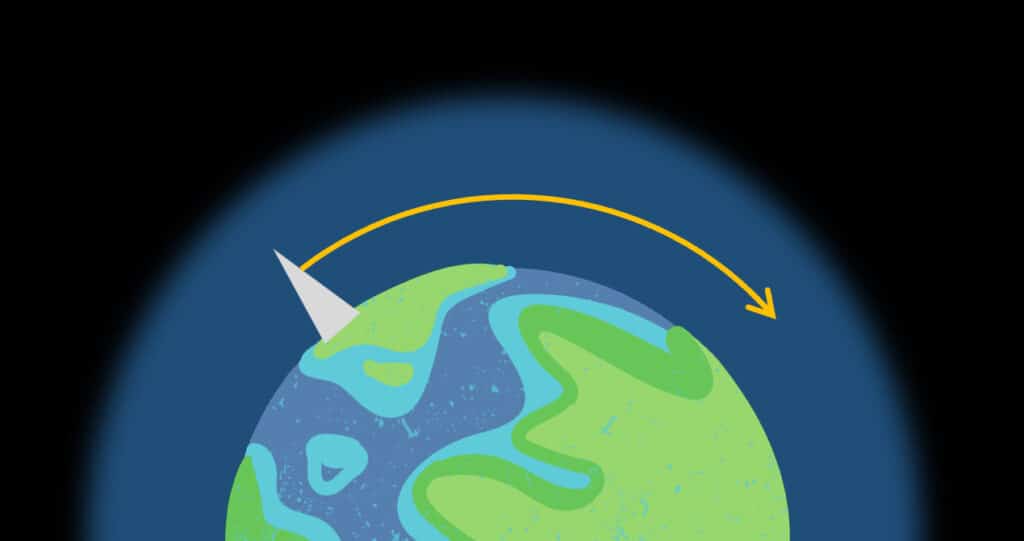
Long-wave Radio Waves
Long-wave radio waves have wavelengths between \bold{1} and \bold{10} \textbf{ km}. These radio waves diffract around large objects such as hills, tunnels and the curved surface on the Earth. This means that long-wave radio waves can transmit signals to a receiver that is not in the line of sight of the transmitter and therefore they can be used for long-range communications.
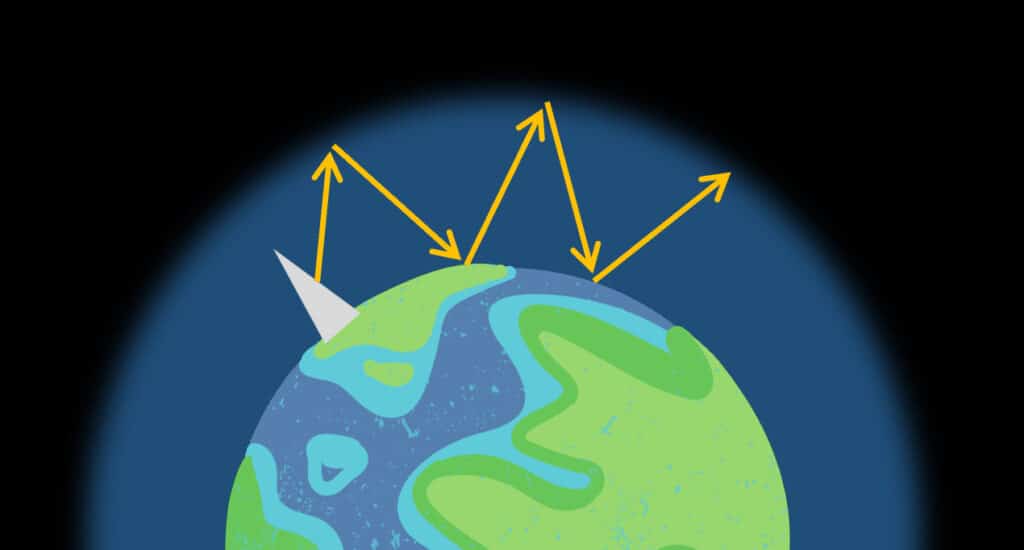
Short-wave Radio Waves
Short-wave radio waves have wavelengths between \bold{10} and \bold{100} \textbf{ m}. These waves do not diffract around large objects however they reflect off the ionosphere (an electrically charged layer of gas in the upper atmosphere). This also allows communication with transmitters or receivers that are not in the line of sight. Bluetooth communication devices also use short-wave signals to transfer radio waves over short distances.
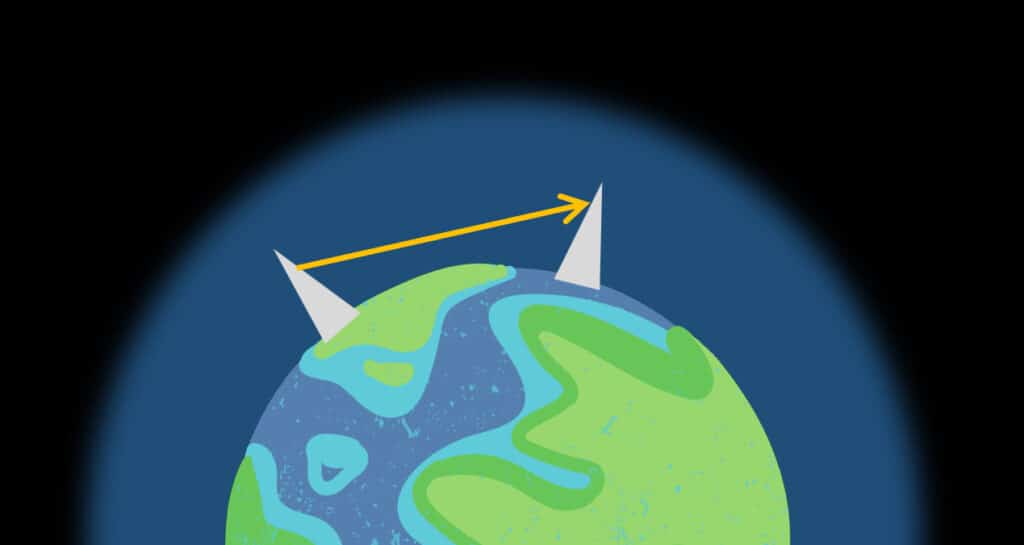
TV and FM Radio Signals
Radio waves used to transmit signals for TV and radio use very short wavelengths. These waves do not diffract around large objects or reflect off the ionosphere and so the transmitter and receiver need to be in the line of sight of one another.
Radio Waves Example Questions
Question 1: Describe how an ac current may create a radio wave.
[2 marks]
The ac current causes electrons to oscillate.
This produces oscillating electrical and magnetic fields which is a radio wave.
Question 2: How does a radio wave produce a signal in a radio wave receiver?
[2 marks]
The radio wave causes the electrons in the receiver to oscillate.
These oscillations create an alternating current.
Question 3: Explain how long-wave radio-waves can be used to communicate between the transmitter and receiver in the diagram, despite there being a mountain in the way?
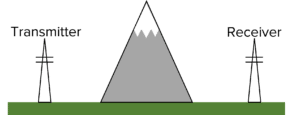
[2 marks]
The long-wave radio waves diffract around large objects such as the mountain.
Question 4: Can a TV signal be transmitted between the transmitter and receiver in the diagram? Explain your answer.

[4 marks]
TV signals require the transmitter and receiver to be in the same line of sight because they do not diffract around large objects or reflect off the ionosphere.
Hence, TV signals cannot be transmitted through the mountain in the diagram.





